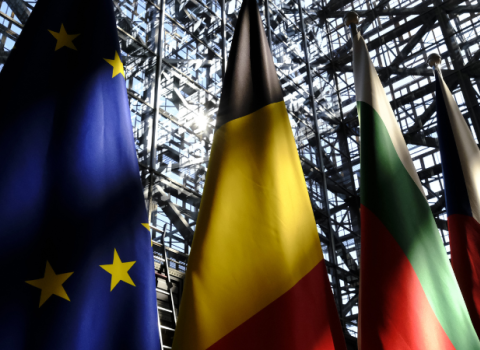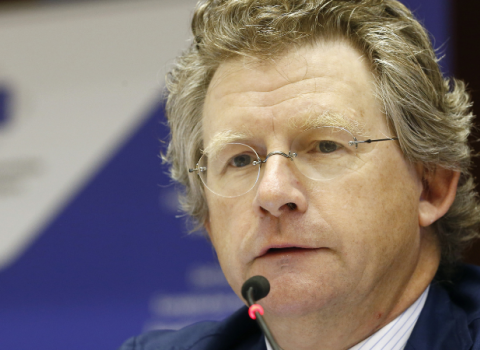Mae Lesbarrères--Fourcassies of RW Blears LLP explains the key differences between the English and French legal systems with respect to corporate governance

Photo credits: tomloel / Bigstock
In a world oriented toward the democratic ideal and influenced for centuries by philosophers, such as Aristotle, Locke, and Montesquieu, the codification of corporate governance aims to counter the solitary exercise of power by executives. In theory, decision-making that is collaborative, transparent, and above all controlled by various corporate bodies should improve the performance and profitability of operations conducted by the company. For innovation to flourish sustainably, an enterprise needs agile governance that encourages experimentation, secures initiatives through appropriate mechanisms, and facilitates rapid adaptation to market changes.
However, corporate governance varies from country to country, bringing with it its own set of subtleties. Thus, between France and England, two radically different conceptions of governance appear to oppose each other, each carrying a particular vision of power, control, and organisational efficiency. This article focuses on French ‘sociétés anonymes’ and English public limited companies, corporate forms where structural governance differences are most pronounced and sophisticated.
The French model - dualistic sophistication
Choice of governance structure
French law gives all ‘sociétés anonymes’, including listed companies, the choice between two types of structures:
- a traditional monistic structure; and
- a two-tier system composed of a management board (‘directoire’) and a supervisory board (‘conseil de surveillance’), reflecting a Cartesian approach that favours the rational separation of management and control functions.
The choice of governance structure is based on the principle that the board of directors must be able to decide in the best interests of the company according to its specific characteristics, particularly its sector of activity, the composition of its shareholding, and even the characteristics of its management team.
Thus, in the dualistic system, the management board acts directly on behalf of the company. It is composed of a minimum of two members and a maximum of five members appointed by the supervisory board, which confers upon one of them the position of chairman of the management board. The supervisory board, composed of three to 18 directors, exercises permanent control over the company's management board. Both boards may be revoked at any time by the general meeting of shareholders.
Indeed, where the Anglo-Saxon system trusts the self-regulatory capacity of the market and shareholders, the French model institutionalises oversight by offering companies the choice to adopt a dedicated structure. The supervisory board thus acts as a mediating body between shareholders and management, embodying a republican vision of governance where checks and balances are systematically organised.
The particularity of the French system thus lies in its ability to offer companies a genuine structural choice. ‘Sociétés anonymes’ can opt for the traditional monistic structure, similar to the Anglo-Saxon model, or adopt the dualistic system. Unlike the liberal Anglo-Saxon approach that favours uniformity of rules, France assumes a more interventionist vision: the State provides a range of legal structures allowing companies to choose the organisation best suited to their specific needs.
While the majority of large French companies have today adopted the monistic structure, the maintenance of the dualistic option by the French legislature implies that corporate governance cannot be reduced to a single model, but must be able to adapt to the diversity of economic and sectoral situations.
Advanced institutionalisation of expertise within boards
The French system pushes further than its English counterpart the institutionalisation of expertise within boards. Whether in monistic or dualistic structures, French companies systematically develop specialised committees: audit committee, remuneration committee, nominations committee and more recently, committees dedicated to ESG (environmental, social, and governance) issues. This proliferation of committees responds to a technocratic logic typically French: the complexity of modern economic issues requires increased specialisation of governance bodies.
The Anglo-Saxon model - unitary efficiency and market pre-eminence
The British governance model rests on a deliberately simple architecture: a single board of directors that concentrates all management and control functions, reflecting a political philosophy deeply rooted in the Anglo-Saxon liberal tradition.
According to the requirements of the UK Corporate Governance Code, at least half of the board must be composed of independent non-executive directors, creating an internal balance between management and oversight without requiring separate structures.
Where the French legislature codifies detailed alternative structures, the United Kingdom favours principles-based regulation that leaves companies considerable interpretative margin. Indeed, the UK Corporate Governance Code operates according to the "comply or explain" principle: companies may deviate from recommendations if they publicly explain their choice. This approach reflects a liberal political philosophy where the state sets general objectives (transparency, independence, efficiency) without prescribing precise means to achieve them. This flexibility contrasts with the French approach which, even while offering structural choices, frames them in detail.
The British system places at the heart of its governance philosophy the independence of non-executive directors. Independence, in the British context, is defined essentially negatively: absence of financial, commercial or personal links with the company. This philosophy of independence implicitly opposes the French approach which, through its specialised committees and dualistic structure, favours expertise and stakeholder representation. Where France institutionalises different forms of legitimacy (technical, social, shareholder), the United Kingdom bets that statutory independence guarantees objectivity of judgment.
Conclusion: two visions of governance, two visions of the company
The fundamental difference between the French and English systems lies in their approach to organisational complexity. France, heir to the Cartesian tradition, postulates that optimal governance emerges from the rational decomposition of functions and their systematic organisation. The English system, conversely, embodies the pragmatic empiricism of the British tradition. The unitary structure of the board of directors reflects a mistrust of artificial complexity and confidence in the organic evolution of institutions.
France maintains a dirigiste tradition where the state positions itself as architect of economic structures. This approach is rooted in the republican and Rousseauist tradition that sees public intervention as a means to optimise the general interest. The English political system, conversely, embodies the liberal tradition and a Smithian philosophy: the "invisible hand" of the market is more efficient than the "visible hand" of the State in optimising governance.
Finally, the deepest difference between the French and English systems lies in their conception of the company and its place in society. France has developed a vision of the company as an integrated social actor that must respond to all stakeholders, while the English system maintains a more restrictive conception of the company as an autonomous economic entity.
One system is not necessarily better than the other, as everything depends on the vision one adopts: The English system values speed and contractual freedom, while the French system chooses stakeholder protection and state supervision.
Contact:
Roger Blears
Senior Partner
RW Blears LLP
6 Kinghorn Street, London EC1A 7HT
e: [email protected]
t: 0044(0)7896151376





 A unique international forum for public research organisations and companies to connect their external engagement with strategic interests around their R&D system.
A unique international forum for public research organisations and companies to connect their external engagement with strategic interests around their R&D system.